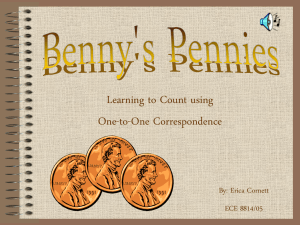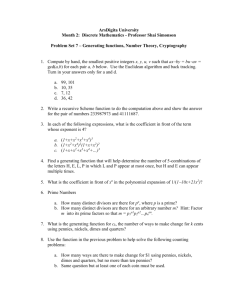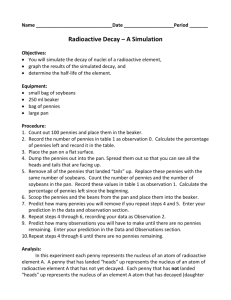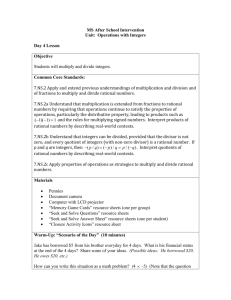Density of Pennies
advertisement
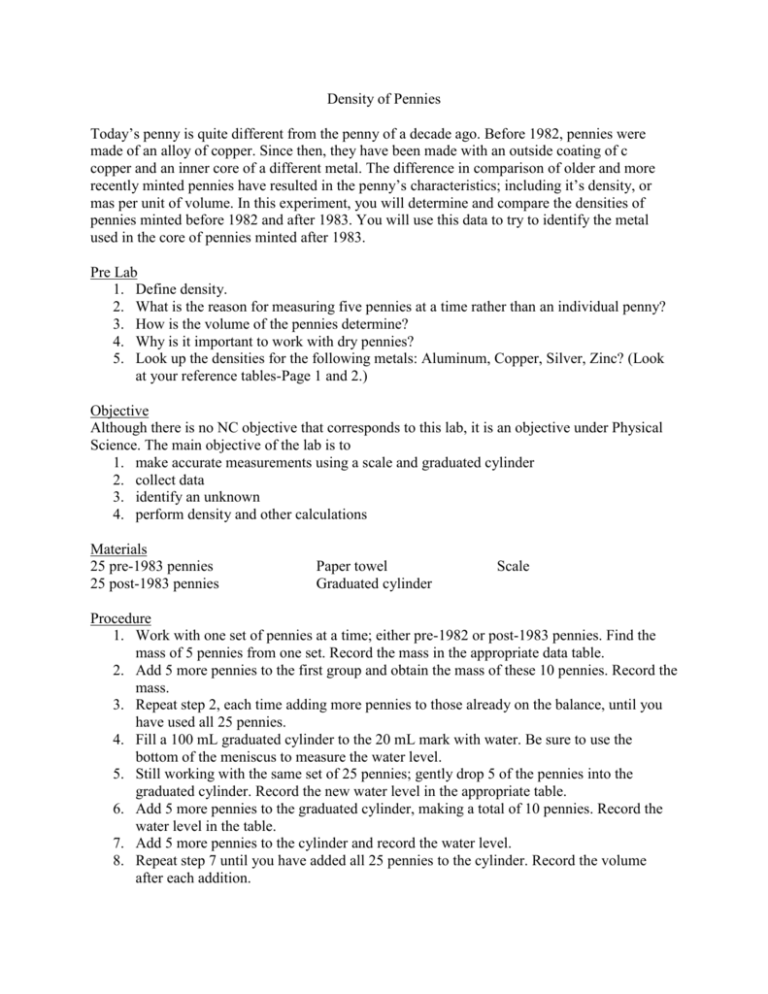
Density of Pennies Today’s penny is quite different from the penny of a decade ago. Before 1982, pennies were made of an alloy of copper. Since then, they have been made with an outside coating of c copper and an inner core of a different metal. The difference in comparison of older and more recently minted pennies have resulted in the penny’s characteristics; including it’s density, or mas per unit of volume. In this experiment, you will determine and compare the densities of pennies minted before 1982 and after 1983. You will use this data to try to identify the metal used in the core of pennies minted after 1983. Pre Lab 1. Define density. 2. What is the reason for measuring five pennies at a time rather than an individual penny? 3. How is the volume of the pennies determine? 4. Why is it important to work with dry pennies? 5. Look up the densities for the following metals: Aluminum, Copper, Silver, Zinc? (Look at your reference tables-Page 1 and 2.) Objective Although there is no NC objective that corresponds to this lab, it is an objective under Physical Science. The main objective of the lab is to 1. make accurate measurements using a scale and graduated cylinder 2. collect data 3. identify an unknown 4. perform density and other calculations Materials 25 pre-1983 pennies 25 post-1983 pennies Paper towel Graduated cylinder Scale Procedure 1. Work with one set of pennies at a time; either pre-1982 or post-1983 pennies. Find the mass of 5 pennies from one set. Record the mass in the appropriate data table. 2. Add 5 more pennies to the first group and obtain the mass of these 10 pennies. Record the mass. 3. Repeat step 2, each time adding more pennies to those already on the balance, until you have used all 25 pennies. 4. Fill a 100 mL graduated cylinder to the 20 mL mark with water. Be sure to use the bottom of the meniscus to measure the water level. 5. Still working with the same set of 25 pennies; gently drop 5 of the pennies into the graduated cylinder. Record the new water level in the appropriate table. 6. Add 5 more pennies to the graduated cylinder, making a total of 10 pennies. Record the water level in the table. 7. Add 5 more pennies to the cylinder and record the water level. 8. Repeat step 7 until you have added all 25 pennies to the cylinder. Record the volume after each addition. 9. Discard the water. Dry the pennies with a paper towel and either pass them to another group to use or give them to your teacher. 10. Repeat step 1-9 using the 25 pennies in the other set of coin. Record your data in the other table. 11. Complete your data tables. Find the net volume of each group of pennies by subtracting 20 mL from the total volume recorded for each group. Enter the net volume f Data and Observations Trial Number 1 2 3 4 5 Total Trial Number 1 2 3 4 5 Total Table 1: Data for Pre-1982 Pennies Mass (g) Initial level of Final level of water (mL) water (mL) Volume of pennies (mL) 20 Table 2: Data for Post-1983 Pennies Mass (g) Initial level of Final level of water (mL) water (mL) 20 Calculations Find the density for pre-1982 pennies and post-1983 pennies. Conclusions 1. Compare the density of copper obtained for the pre-1982 pennies? 2. Calculate the percent error for the pre-1982 pennies. 3. What is the density of the post-1983 pennies? 4. Compare this value to the density of the metals listed in the pre lab. 5. Which metal could be inside the post-1983 pennies? Volume of pennies (mL)

